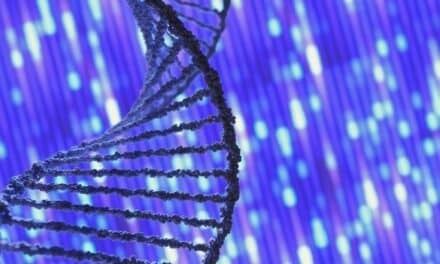A new genetic sequencing technology from Element Biosciences has helped researchers from the Translational Genomics Research Institute (TGen), part of the City of Hope, identify the likely genetic causes of disorders in six of nine children from Sonora, Mexico. These research results have been independently confirmed in a clinical lab setting.
The findings will help these children and their families, who had little or no access to previous genetic testing, as they seek treatments and supportive communities.
The children in the study have conditions including developmental delay, problems with language, seizures, heart anomalies, and other difficulties, says Keri Ramsey, BSN, clinical co-director of TGen’s Center for Rare Childhood Disorders. For one of the conditions identified, there are treatment options available. For a second condition, there are research studies in gene therapy underway.
“Having an answer will give these families hope and access to resources that maybe they weren’t eligible for in the past and can help their child’s physician make adjustments to the patient’s care and management of their symptoms,” says Meredith Sanchez-Castillo, MD, Clinical Research Coordinator at TGen’s Center for Rare Childhood Disorders.
TGen researchers worked with Element Biosciences, a multidisciplinary life science company, and its AVITI benchtop sequencer to sequence the genome from each child and their parents in nine families. Through cost and workflow improvements, Element’s genetic sequencing technology will support broader access to genetic testing for families like the ones in this study.
Further Reading: Tecan Collaborates with Element Biosciences for Benchtop NGS
TGen and Element researchers will present the results of the Sonoran study at the American Society for Human Genetics meeting in November 2023.
“These families come from Sonora, Mexico, with limited resources and no access to genetic testing,” says Sanchez-Castillo, who worked with clinicians in Mexico to identify the families. “Some of the families required temporary visas to enter the U.S. which makes things more complicated for them since they have to drive more than five hours to our clinic.”
Genetic sequencing of the trio, a child and both parents, can uncover genetic variants that might be related to the child’s disorder, and whether those variants are inherited. During this process, each part of the DNA is sequenced multiple times, and how often it is sequenced is called coverage.
The study leveraged a novel design of sequencing the parents at half the coverage of the child so that the entire trio could be sequenced on a single flow cell, while retaining the ability to identify de novo variants.
“This design of a trio per flow cell is fast, cost effective, and obviates the sample batching required for factory scale systems. We were excited to see that it was also highly effective in identifying inherited and de novo variants of interest,” says Semyon Kruglyak, PhD, vice president of informatics at Element Biosciences.
Kruglyak and his colleagues had tested the technology on a rare early onset blindness condition and wanted to expand the study to see how well it might work in finding new or “de novo” genetic variants that aren’t inherited from parents, but instead show up first in the child. Such variants more commonly occur in neurological disorders.
At roughly 40 times coverage for the child and 20 times coverage for each parent, the genetic sequencing took under 48 hours to complete, and cost $1,680 per trio. Each Element AVITI instrument accommodates two flow cells, so two trios can be sequenced at a time. The sequencing for this study was performed by FYR Diagnostics, a service provider and early Element customer.
“I think this is significant, especially for bringing the technology to these researchers,” says June Zhao, PhD, senior director of applications at Element Biosciences, who notes that the process uses off-the-shelf library prep products to generate PCR-free libraries for AVITI sequencing. “It’s simple and easy to use, has a faster turnaround time, and we can achieve high quality with the benchtop sequencer.”
Even with the lower coverage for parents, the researchers were able to identify the likely genetic cause in 67% of the families. “Usually, our rate of detection for families in the Center is around 40%,” says Ramsey.
TGen and Element researchers independently analyzed the results, and “we had near perfect concordance, so I think that’s a testament to the data quality and the interpretation processes that were utilized to draw conclusions,” says Kruglyak.
The affected gene was different in all families, and the genetic sequencing technology was able to capture a variety of different kinds of gene variants, he added.
“Following clinical confirmation, we have started counseling the six families about family planning and recurrence risk,” Ramsey says. In cases where no current treatment is available, the Center will help the families connect with resources and other patients with the same condition.
“Not only does this have the potential to explain what the cause is of their child’s symptoms, it may also provide insights on what the future might hold for their children,” she added.
Ramsey says that since TGen’s Center for Rare Childhood Disorders opened in 2012, it has become more important than ever to seek genetic diagnoses.
“A lot of the therapeutic approaches now are leaning toward gene therapy—going in and editing or providing copies of the missing or broken gene. In these cases, it’s vital to know the underlying genetic cause of the child’s disorder,” she says. “At TGen we’re always looking for the best types of sequencing technologies, and this is really exciting because it’s a proof of concept that this genetic sequencing strategy is successful.”
Featured image: Element Biosciences AVITI benchtop sequencer. Photo: Element Biosciences




